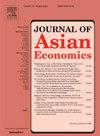万能寿险信贷利率的驱动因素:来自中国保险业的证据
IF 3.4
3区 经济学
Q1 ECONOMICS
引用次数: 0
摘要
鉴于长期的低利率环境对中国寿险公司长期业务的不利影响,本研究以该行业的代表产品万能寿险(UL)为研究对象,考察信贷利率的决定因素。它强调了保险公司的战略行为、财务约束和市场利率动态之间的相互作用。利用2015年1月至2021年12月38家中国寿险公司的月度数据。实证研究是在混合平均组(PMG)估计器和面板自回归分布滞后(PARDL)模型的背景下进行的,适当考虑了截面依赖性和结构断裂的潜在存在。研究发现,保险公司的投资型保费比率(ITPR)、财务杠杆(LEV)和再保险分拨比率(REINSUR)对信贷利率具有长期的负向影响,而1年期国债收益率(TBY)对信贷利率具有长期的正向影响。此外,最低工资费率的短期调整主要是由TBY波动造成的。Dumitrescu和Hurlin(2012)的因果检验进一步确定了ITPR和UL之间的双向反馈,突出了保险公司在市场扩张和财务稳定之间的战略权衡。结果表明,过度依赖投资驱动型负债战略会加剧长期偿付能力风险。本研究通过将保险公司的运营需求整合到保险定价框架中,为政策制定者在中国快速发展的保险业中平衡市场增长与系统稳定提供了见解。本文章由计算机程序翻译,如有差异,请以英文原文为准。
Drivers of the credited interest rate on universal life insurance: Evidence from the Chinese insurance sector
Given the adverse impact of the prolonged low-interest rate environment on the long-term business of Chinese life insurers, this study focuses on Universal Life (UL) insurance, a representative product in the sector, to examine the determinants of credited interest rates. It emphasizes the interplay between insurers’ strategic behavior, financial constraints, and market interest rate dynamics. Leveraging monthly data from 38 Chinese life insurers from January 2015 to December 2021. The empirical investigation is carried out in the context of the pooled mean group (PMG) estimator and panel autoregressive distributed lag (PARDL) model, with proper consideration of the potential presence of cross-section dependence and structural breaks. Our findings indicate that the investment-type premium ratio (ITPR), financial leverage (LEV), and reinsurance cession ratio (REINSUR) of insurance companies have a long-term negative effect on the credited interest rate, whereas the 1-year Treasury bond yield (TBY) has a long-term positive influence on it. Additionally, the short-term adjustments in UL rates are primarily driven by TBY fluctuations. Dumitrescu and Hurlin (2012) causality test further identifies bidirectional feedback between ITPR and UL, highlighting insurers’ strategic trade-offs between market expansion and financial stability. The results underscore that excessive reliance on investment-driven liability strategies exacerbates long-term solvency risks. This study contributes to the literature by integrating insurers’ operational imperatives into UL pricing frameworks, offering insights for policymakers to balance market growth with systemic stability in China’s rapidly evolving insurance sector.
求助全文
通过发布文献求助,成功后即可免费获取论文全文。
去求助
来源期刊

Journal of Asian Economics
ECONOMICS-
CiteScore
4.70
自引率
9.40%
发文量
90
期刊介绍:
The Journal of Asian Economics provides a forum for publication of increasingly growing research in Asian economic studies and a unique forum for continental Asian economic studies with focus on (i) special studies in adaptive innovation paradigms in Asian economic regimes, (ii) studies relative to unique dimensions of Asian economic development paradigm, as they are investigated by researchers, (iii) comparative studies of development paradigms in other developing continents, Latin America and Africa, (iv) the emerging new pattern of comparative advantages between Asian countries and the United States and North America.
 求助内容:
求助内容: 应助结果提醒方式:
应助结果提醒方式:


